CBE History
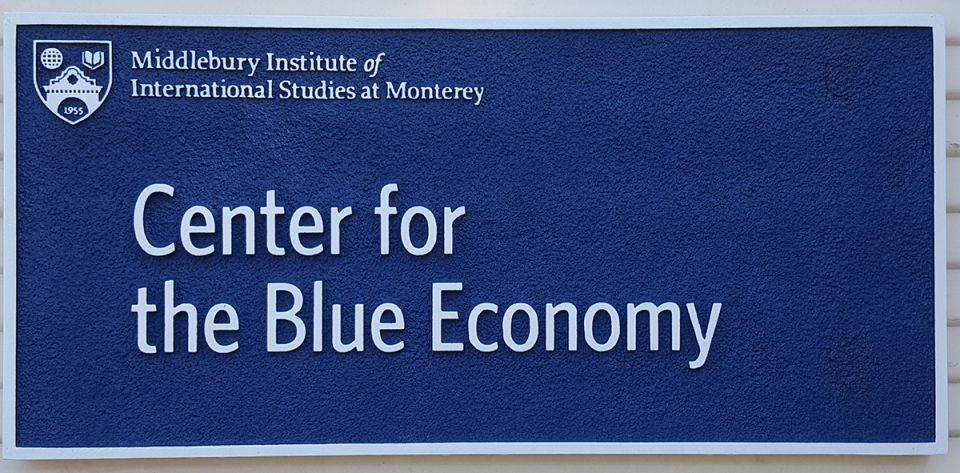
The Center for the Blue Economy was founded in 2011. We are committed to creating original research and providing free, open-access data and analysis for business, government, and NGOs to make informed decisions as they sustainably manage ocean and coastal resources.
What is the “Blue Economy”?
The “Blue Economy” is now a widely used term around the world with three related but distinct meanings—the overall contribution of the oceans to economies, the need to address the environmental and ecological sustainability of the oceans, and the ocean economy as a growth opportunity for both developed and developing countries.
Center for the Blue Economy research addresses issues with a particular focus on helping organizations understand how to measure the size and changing nature of economic relationships with the oceans in order to guide choices and monitor progress.
The field of climate-change adaptation economics is relatively new and seeks to identify ways to choose the most beneficial approaches to coping with sea level rise and related changes in ocean systems by combining perspectives from different areas of economics. These include risk and investment analysis, regional economics, the measurement of ecological values, and finance. The economic questions that must be answered are becoming clear to researchers but are still on the outskirts of policy attention in most parts of the U.S. and the world.

History and Methodology
“What does the ocean lend to the U.S. Gross Domestic Product?” This was the fundamental question that Dr. Judith Kildow, then a professor at MIT, was determined to answer. No one before her had stuck with the question long enough to find a definitive answer. With her perseverance and partnership with economist Dr. Charles Colgan, they innovated an entirely new field of study called ocean economics, founding the National Ocean Economics Program (NOEP) in 1999. Their methodology is now the standard for studying the Blue Economy around the world. Finding a permanent home for this data was part of the impetus for the founding of the Center for the Blue Economy in 2011. We measure two distinct subsets of the Blue Economy—the Ocean Economy and the Coastal Economy.
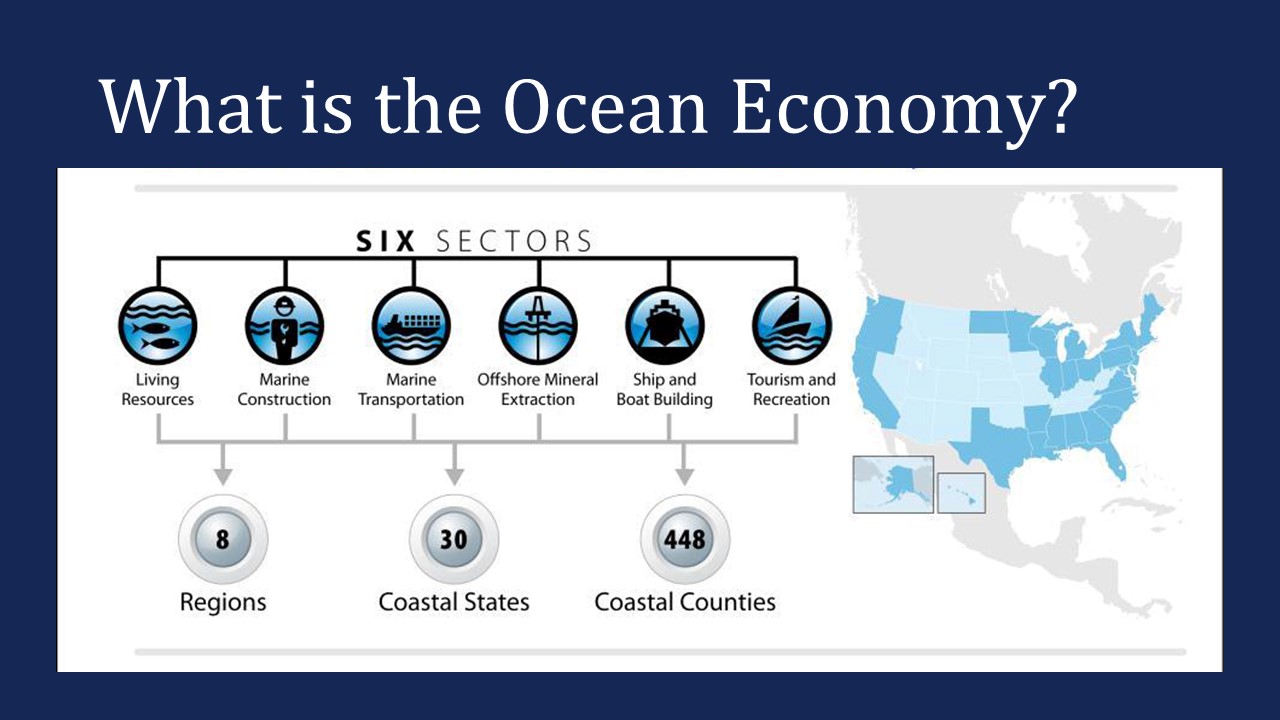
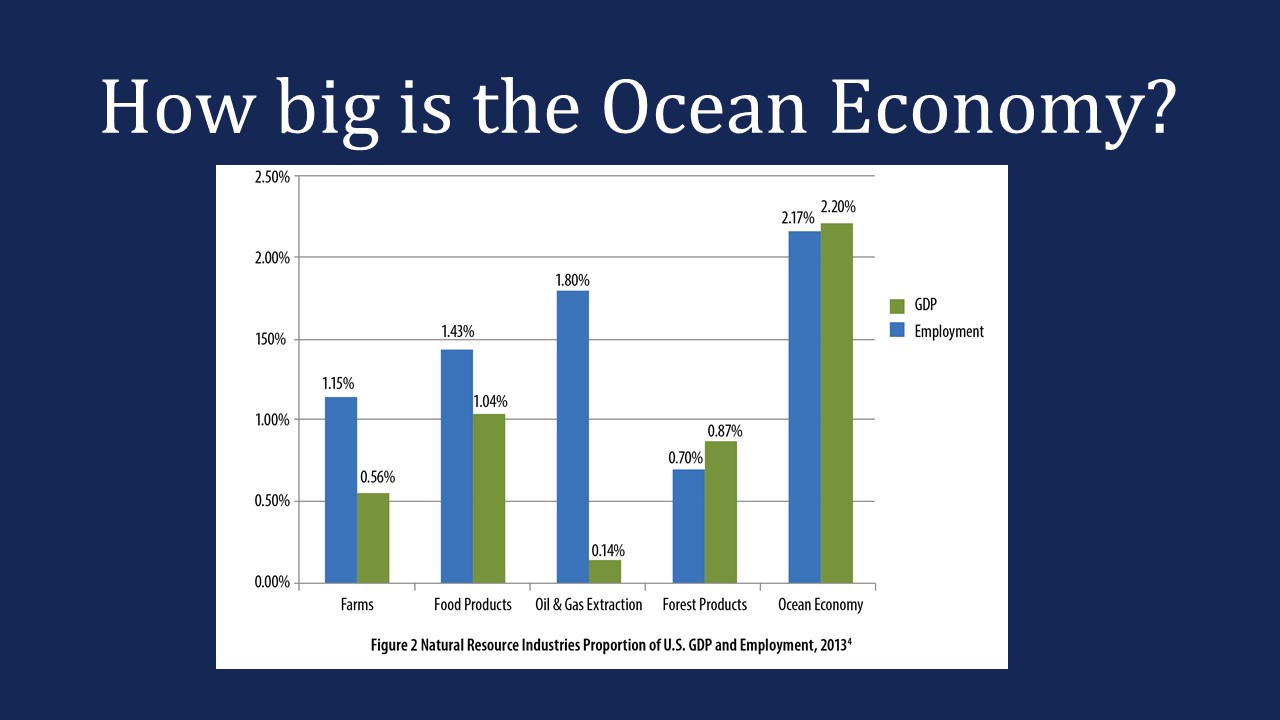
The ocean economy is a larger share of U.S. Gross Domestic Product (GDP) than agriculture and food production, oil and gas, and forestry. More than $359 billion (out of $16 trillion) is generated annually, providing three million jobs (out of 133 million) as of the last data update.
A Note on Data Sources: All of the data reported in our National Ocean Economics website and publications, with the exception of the Arctic data, is sourced from trusted public sources, including the Bureau of Labor Statistics, Bureau of Economic Analysis, Census Bureau, National Oceanic and Atmospheric Administrations (NOAA) Office of Coastal Management, NOAA Fisheries, and Department of Interior. We use some state-level data from Alaska, Texas, Louisiana, California, Mississippi, and Alabama for oil and gas numbers, and beach-nourishment data from West Carolina University.
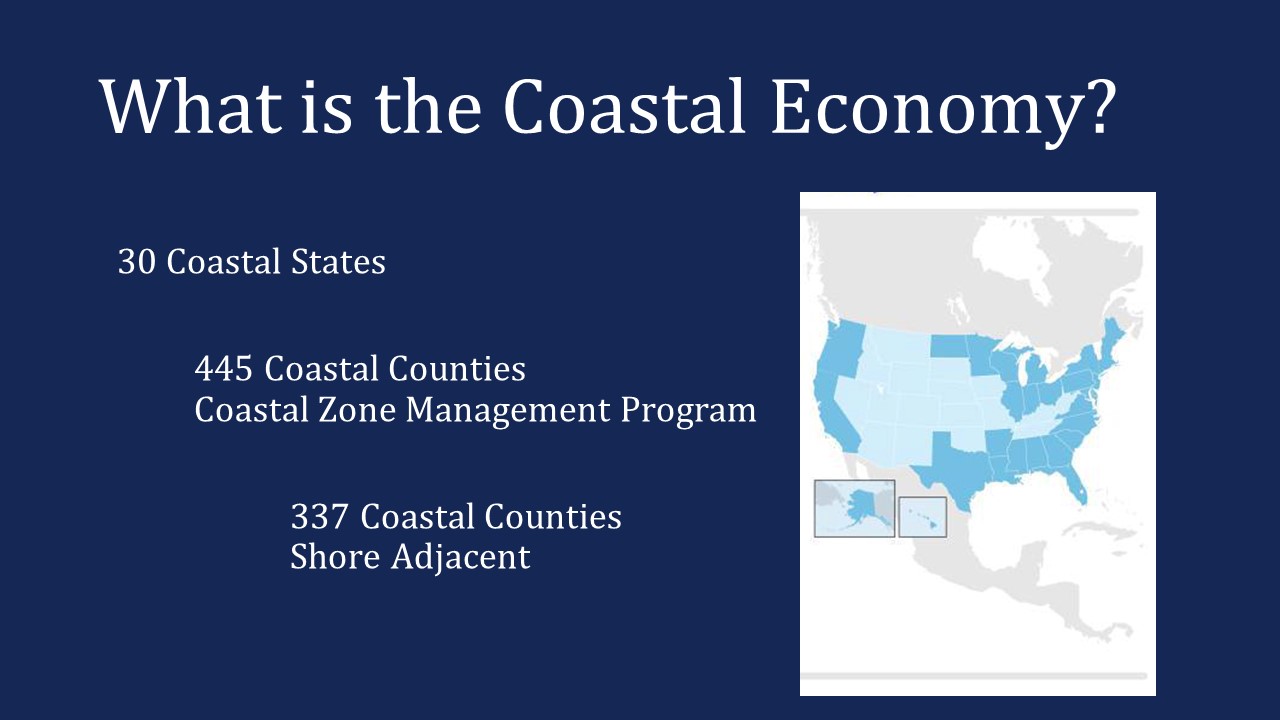
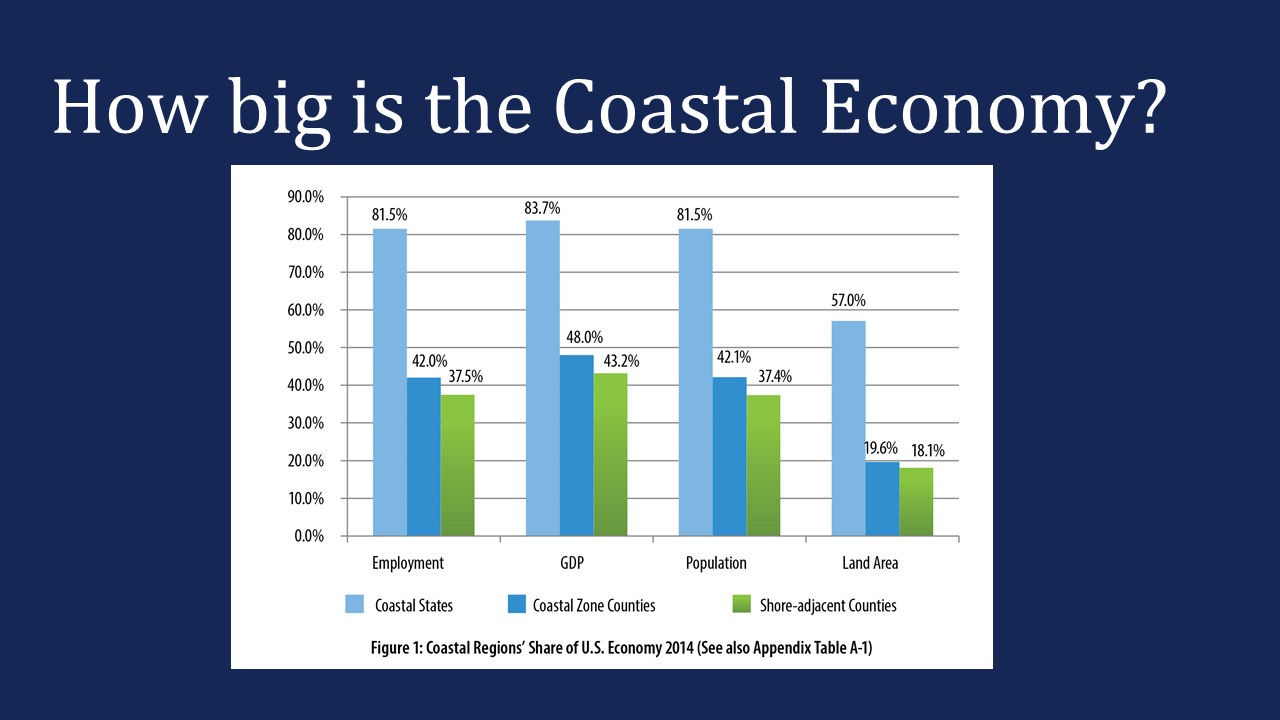
Stunning Statistics: The coastal economy, when taken as all economic activity of the 30 coastal states, generates 83.7 percent of total U.S. Gross Domestic Product (GDP). In fact, $13.2 trillion of $15.8 trillion, and 111 million jobs out of 136 million total U.S. jobs, are generated in the coastal states. And 259 million people of a total population of 318 million people in the U.S. live in the coastal states. Even when minimized to the coastal county level, the coasts are the clear economic drivers of the nation’s economy.

June 2, 2020: For the first time, the United States will officially measure the Ocean Economy.
This pioneering effort is the culmination of years of dedicated innovation, advocacy, and research by Dr. Charles Colgan, the Center for the Blue Economy’s Director of Research. Dr. Colgan worked with a team of researchers at NOAA, the Bureau of Economic Analysis, and ERG Incorporated to develop the first official U.S. Ocean Accounts Statistics.
For many years, other market sectors such as outdoor recreation or the arts and culture industries have had special “satellite accounts” that provide considerably more details than are available in the standard accounts. Although the ocean economy consistently generates a larger share of the U.S. economy than other major natural resources, there was no official measurement until 2020.
See full story: America’s Blue Economy Worth Nearly $373 Billion
